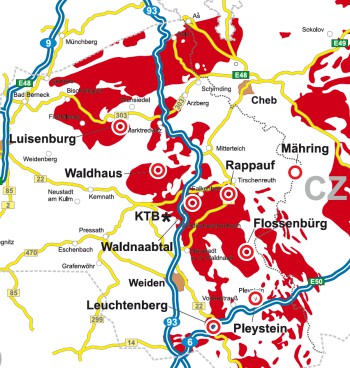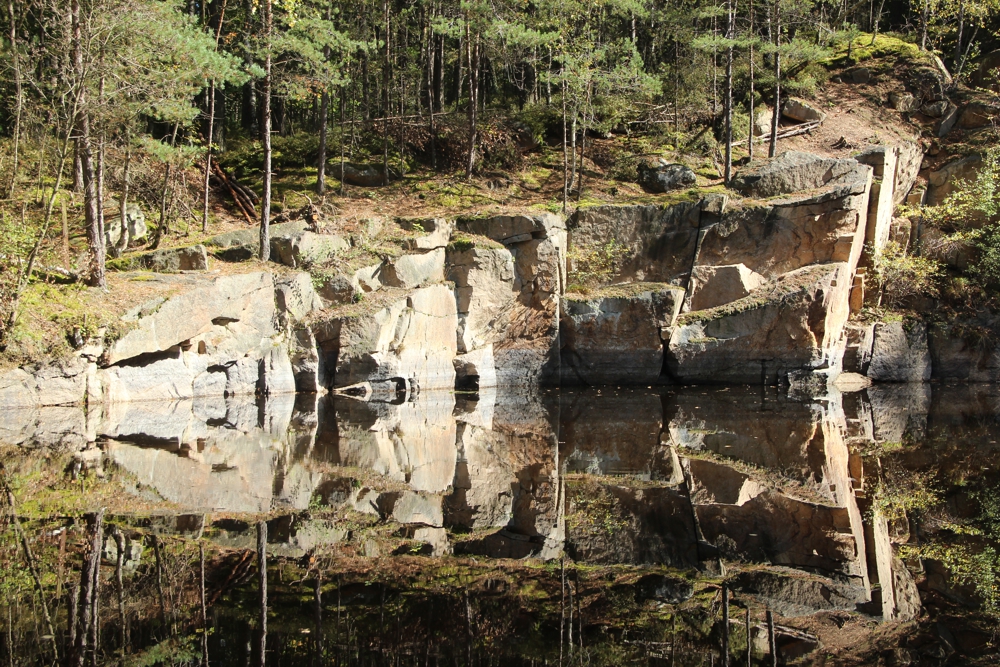
Standort 1: Leuchtenberg
Vom Magma zum Festgestein
Granit ist in der kontinentalen Kruste das häufigste Tiefengestein. Es erstarrt
aus einem zähflüssigen, glühend heißen Kristallbrei, dem so genannten
Magma. Granite entstehen zumeist während der Gebirgsbildung.

Od magmatu k pevné hornině
Žula je nejhojnější hlubinnou horninou kontinentální zemské kůry. Vzniká tuhnutím původně viskózního, rozžhaveného krystalového těsta, tzv. magmatu. Žuly vznikají většinou během horotvorných procesů.

From magma to solid granite
Granite is the most common rock in continental crust. It solidifies from a viscous, hot mixture of crystals and melt, the socalled magma. Most granites form during orogenic processes.
Bildimpressionen

Tafelstandort in der Karte


Klicken Sie auf den Ortsnamen für mehr Informationen
Tafel 1: Leuchtenberg
Vom Magma zum FestgesteinOd magmatu k pevné hornině
From magma to solid granite
Tafel 2: Pleystein
Granit-Pegmatit – das Beste zum SchlussŽulový pegmatit
Granite pegmatite
Tafel 3: Flossenbürg
Naturwerkstein GranitDekorační kámen žula
Granite as a natural stone
Tafel 4: Mähring
Strahlender Granit – Radioaktivität im SteinZářící žula – radioaktivita v kameni
Radiating granite – radioactivity of the rock
Tafel 5: Grube Rappauf Tirschenreuth
Verwitterter Granit – Kaolin für die PorzellanindustrieKaolin pro porcelánový průmysl
Kaolin for the porcelain industry
Tafel 6: Waldnaabtal
Landschaftsformen im GranitŽulové krajinné útvary
Landscape shaped in granite
Tafel 7: Waldhaus Pfaben
Boden aus Granit – Bedeutung für den WaldPůdy na žule – význam pro les
Soil from granite – significance for the forest
Tafel 8: Wunsiedel Luisenburg
Verwitterungsformen im Granit – Felstürme, Wollsäcke und BlockmeereZvětrávací tvary žuly
Weathering of granite







